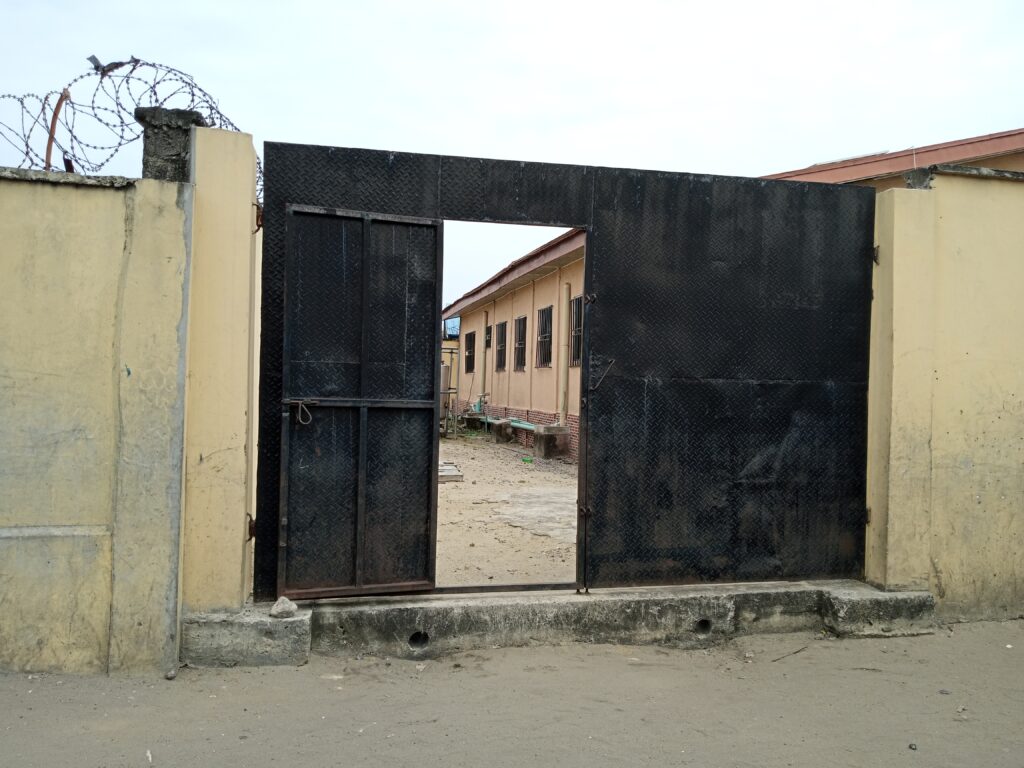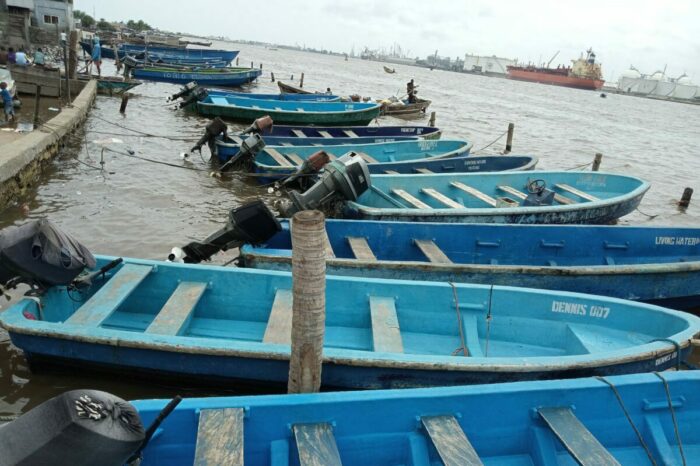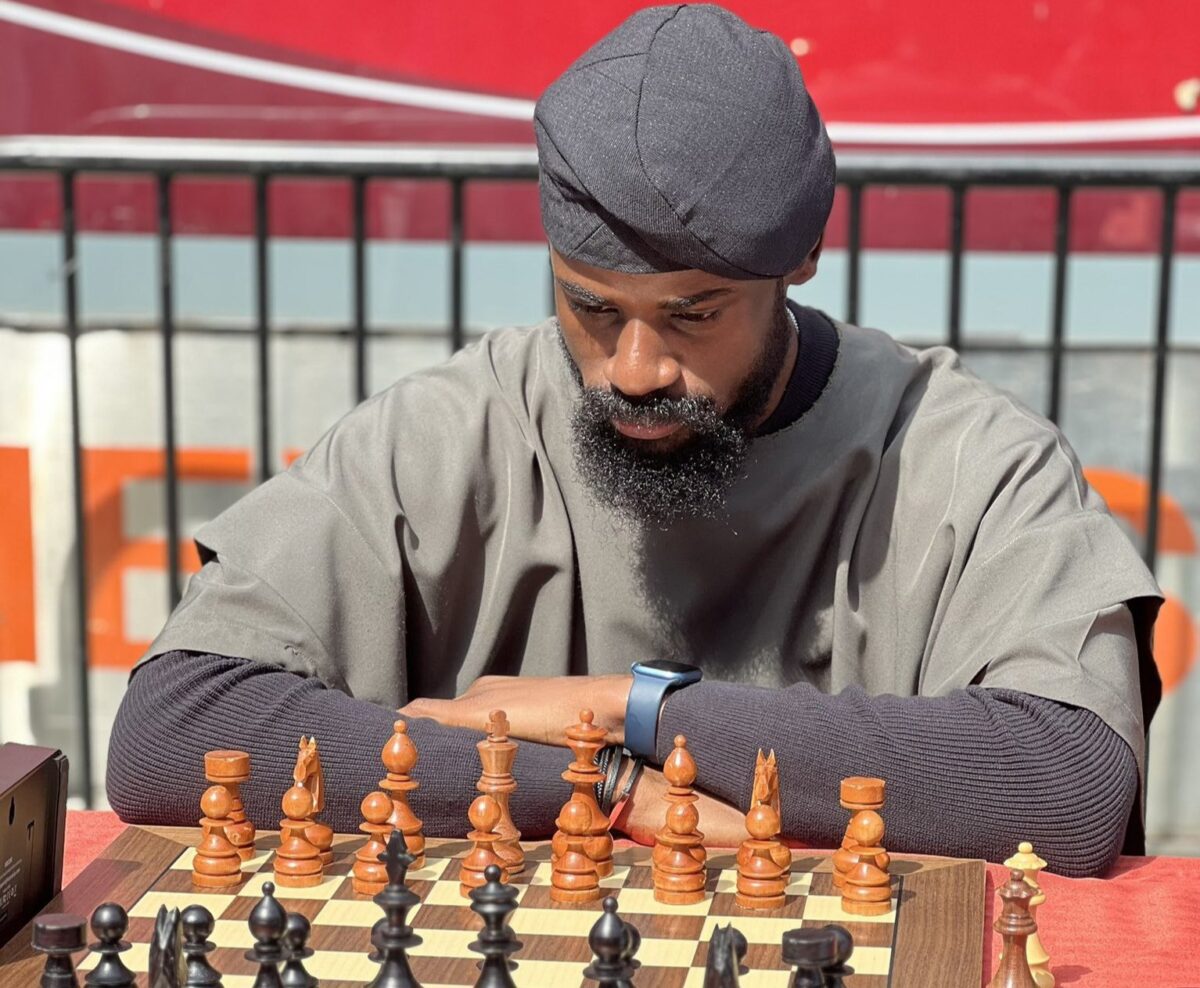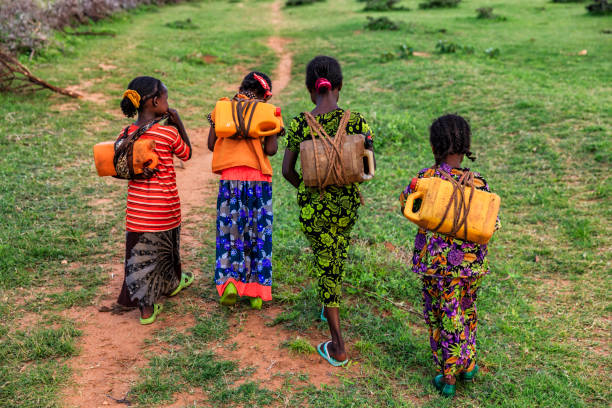Sagbo-Koji is one of the five villages that make up a small island in the heart of Lagos. The small island comprises Manager, Sagbo-Koji, Bishop-Koji, Ito Aon and Tomaro. I spent a day on the island to experience the inhabitants’ everyday lives and what defines them as a people.
I held my heart in my hands as I crossed the Lagos Atlantic to a tiny island hosting five communities. It was my second time at the sea and I shut my mind to the horrifying images of our flying boat capsizing as it ferried across the sea.
My heart was weak, but my resolution to visit Sagbo-Koji was strong. There were ten of us, including the pilot, in the flying boat that would take us to the island. We sat on planks that divided the boat into four sections. The exterior of the boat was powder blue, while the interior had the colour of weather-worn wood.
It all started when I entered the busy ticketing hall for sea trips in CMS. There, I met a crowd of people waiting for boats that would convey them to their destination.
A middle-aged man, who works in the ticketing hall approached me. “Apapa?” He asked.
“No, Sagbo-Koji,” I answered.
“Come this way then,” he said.
I followed him and he led me to the dock where I met three flying boats swaying in the water. One of them was already occupied by eight people in life jackets, while the other two were empty.
“She is going to Sagbo-Koji,” he told a man who I would later know to be the pilot of our canoe.
READ ALSO: REPORTER’S DIARY: Inside Lagos Banks Where People With Disabilities Are Neglected
“This way,” the pilot pointed out as he handed a life-jacket that had seen better days to me. The black and red colours of the jacket showed that hundreds, if not thousands, of people had worn it.
I then gingerly stepped into the waiting boat with his help. As soon as I found my feet, he motioned me to a seat very close to the one at the boat’s edge.
I gave him a horrific look. “Please, let me sit between these gentlemen,” I pleaded.
“No,” the driver said sharply.
“Please, I am scared,” I pleaded the second time.
“You can only sit here,” he reiterated, pointing towards the edge.
One gentleman who saw my discomfort immediately volunteered to make room for me. He shifted to the edge of the boat where I was meant to sit and asked me to sit next to him. The other gentleman, who was wearing a black oversized suit over a stripped polo, also made room for me.

I sat between these two men as we crossed the ocean. My heart pounded as the boat made a grinding sound crossing the sea. The pilot backed us, the boat’s engine whirring as he kicked it to life. We were going eastward. The boat travelled on water, but the keel moved as though it was grazing over rocks.
Ten minutes into the trip, we arrived at a dock. A woman who had wares tapped me and said, “This is where you will alight. We are now at Sagbo-Koji.”
I jumped up eagerly for fear that the swaying boat might not be well moored and so cause the unfortunate to happen.
As I stepped onto a wooden platform that would lead me to the ground, I held the hands of one native, but he lost his grip on me and I stumbled back into the boat, nearly collapsing face down into the ocean. I was rescued, and I was ready to spend my day in Sagbo-Koji.
I stepped into Sagbo-Koji at 10:47 am and instantly stood out as a stranger. I met people who spoke more of the Egun Language than Yoruba.
It didn’t take more than ten minutes for me to realise that the island was a fusion of ethnic groups. The Egun inhabitants were dominant, but there were also the Yorubas, the Ilajes, the Igbos and the Ebiras.
I tried starting conversations while I waited for my tour guide, who didn’t arrive until 30 minutes after telling him I was on the island.
During the wait, I saw children who played around in their underpants. Some played in the sand, while others washed their fishing nets with their parents on the shore.
When Asiko Tunde, my tour guide arrived, he advised I meet with the community head to take permission, especially if I would interact with the locals. He advised it was more important for my safety than any other thing.
We ventured into the island, which was more like a big compound. Spaces between houses marked the tiny streets which ran into one another other, and the houses had roofs peeking into one another’s windows.
I met Chief Salako, who resisted the idea of a complete stranger mixing with the locals. He insisted I went through the king, who he said was resident in the metropolitan part of Lagos island, or the chiefs who were all absent when Asiko took me round their houses.
He warned Asiko against letting me go unguarded into the town as I could be a spy trying to gather an intelligence report on the community. I explained I was none of who he suggested, but he held on to his suspicion. He added that if any of the chiefs saw me roaming around the community, it could spell doom for him and his office.
However, he offered to chat with me just to while away time. He told me he was one of the original founders of the town. Chief Salako, a man in his fifties, had a slim frame and jutted cheeks that made his face stand out. He had a dark skin and spoke English, Yoruba and Egun fluently. Our conversation gave me an insight into the history of the land.
“My late parents were the original founders of this town,” he said. “I was brought into this town as a very young child. My people migrated from Benin Republic to this island and we have inhabited this island for over fifty years,” he explained.
“This community was named after my uncle, Isagbo. It was later shortened to Sagbo. ‘Sagbo’ means twins and ‘koji’ means community.
“I was also the first student to attend the Itamoro-Ilaje which is the only community primary school founded on this island. There are other private schools, but no government secondary school within the island.”

Front view of the only community primary school on the island. (It shares the same compound with the only health centre on the island.)
Photo Credit: Opeyemi Lawal
“Students cross, i.e., travel out of the island daily to attend secondary school.”
At this point, he realised I was getting too much information on a platter and he asked that I wait somewhere till the right people who would give me the information I needed arrived. At this point, Asiko agreed to host me.
NO ELECTRIC POLES, OVERHEAD WIRES
While I walked with Asiko, I saw several centres for charging phones. I then asked why there were so many of them. In his response, Asiko called my attention to the fact that there were no electric poles or overhead wires on the island. I walked into one centre and met with John, a light-skinned young man, who introduced himself as the owner of the business. He had several fuses connected to a rectangular wooden board where customers’ phones were charged.

John’s charging centre.
Photo credit: Opeyemi Lawal
“How much for a phone?” I asked.
“N100,” he answered.
“How do you get fuel to power your generator since there is no filling station within the island?”
“The fuel is usually transported from the other side. Just that we don’t get to buy it at the normal rate. The fee is often a little higher than the rate it’s sold for outside the island. Five liters of fuel can go for N1,500 or N1,800, depending on who is selling.”
Asiko said that some years ago, street lights in the community and the homes of some community leaders were powered with solar, but everyone now relies on fuel for power.
A JERRICAN OF WATER FOR N80
We once again stepped into the hot sun and walked a few distance. As we chatted, a young boy, who was by a well, called out to Asiko in Egun. He was asking him for assistance so he could put his medium-sized bucket of water on his head.
It then occurred to me that I had seen no taps around. I had ignored the large tanks of water seen on my way into the community.
Asiko explained that most of the water used on the island was transported from across the ocean and then stored in large water tanks, which were positioned in strategic locations.
“Sometimes, this affects the cost of water. A yellow jerrican can be sold for N80,” he said.


The water is transported from the ocean to the tanks via water-proof hoses which run across the town and then sold to the community.
“Why not dig a well rather than go through this stress? I mean, this is an island; getting water shouldn’t be so difficult,” I asked Asiko.
He said that digging a well on the island might be really tasking.
“On this island, you might have to dig up to seven feet to get water. However, in other islands, you won’t have to dig more than three feet to get water. This is why we have to make do with water got from across the ocean,” he said.
NO DRAINAGE CHANNELS HERE
We walked further and the smell of human waste, especially urine, assailed our nostrils. I observed that there were no gutters or drainage channels, which allowed for wastes on almost every surface.
I asked Asiko why most of the houses we had seen had no drainage or sewage systems.
“It is a common feature on the island to build houses without toilets. What we do is ‘short put’, which means that people do their toilet business in polythene bags and then throw into the sea.
“It has been this way since the island was built. However, house owners are beginning to add toilets as a feature to their houses.”
Wastes in all forms played at the edge of the ocean. The community evidently hauls all of its wastes into the ocean as there are no channels for a proper disposal.
A 7-YEAR-OLD WITH A SACHET OF ALCOHOL
One other feature that stood out in the village was the high level of alcohol intake by the locals. It flowed freely in sachets and small bottles among the young and the old.
One man who sat in front of Chief Salako’s office had a bottle of Vodka and beer opened in front of him.
He said in Yoruba, “Bring more bottles, I have the whole of today to drink to my content.”
Things became a bit more worrisome for me when a seven-year-old girl, who had a sachet of alcohol dangling from her teeth, cheerfully waved at my tour guide.
I later found out that alcohol was enjoyed as a causal drink on the island and was not restricted to any age. Young men formed clusters as they sat round dozens of bottles of alcohol.
The more charging centres I saw, the more alcohol joints I found standing in corners around the island.
By the time we arrived at Asiko’s residence, it was around 1 pm. An hour and thirty minutes later, Asiko took me back to Chief Salako, but on our way we were accosted by Mr. Shuaib, the community head of youths, who took me to Chief Dosu Victor, the second-in-command to the king. I met him and he gave his consent.
By the time I left the small island hosting the five villages, I was more worried about their survival than I was about my trip back to the mainland.
Subscribe
Be the first to receive special investigative reports and features in your inbox.















